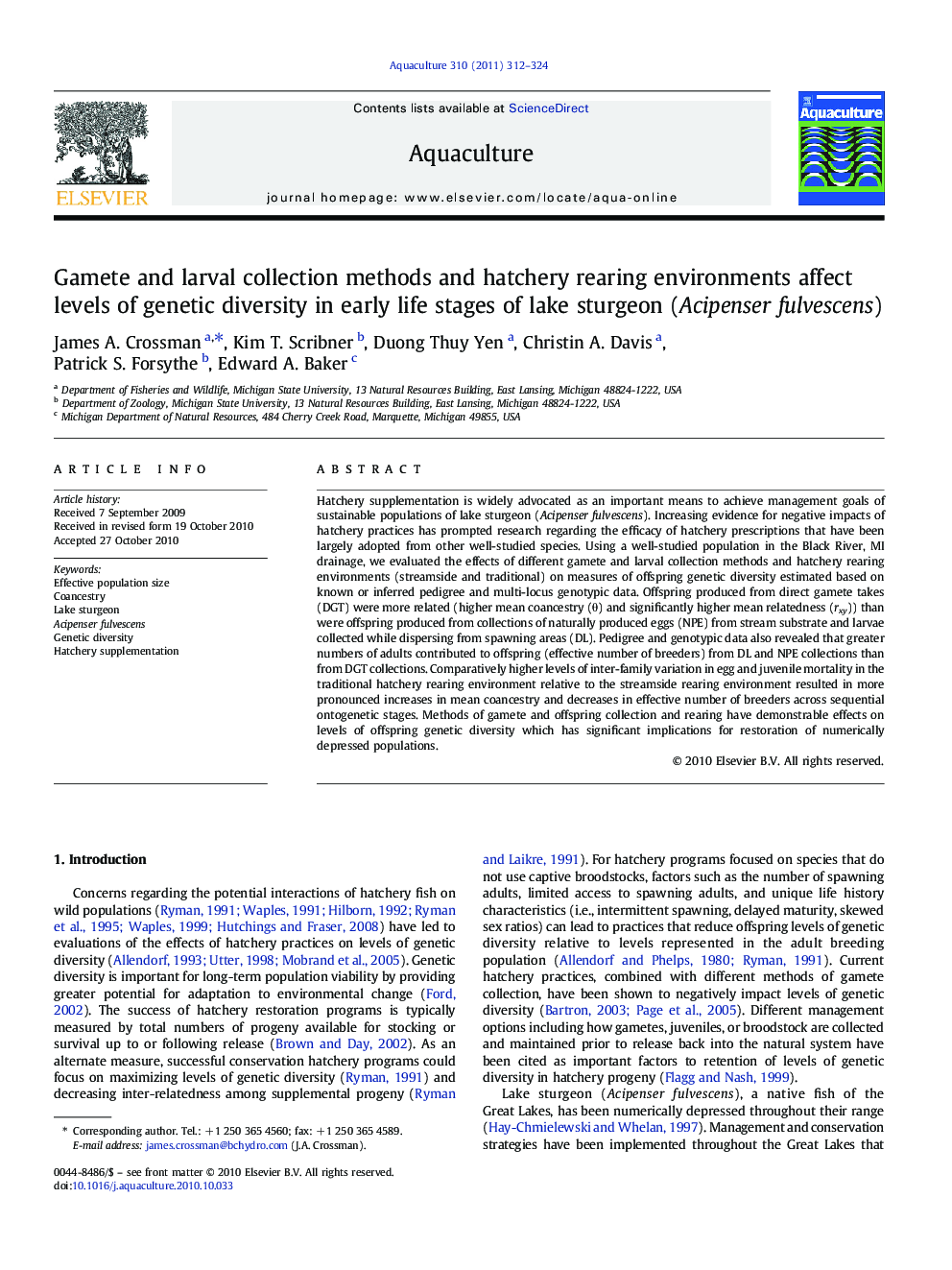| Article ID | Journal | Published Year | Pages | File Type |
|---|---|---|---|---|
| 2423075 | Aquaculture | 2011 | 13 Pages |
Hatchery supplementation is widely advocated as an important means to achieve management goals of sustainable populations of lake sturgeon (Acipenser fulvescens). Increasing evidence for negative impacts of hatchery practices has prompted research regarding the efficacy of hatchery prescriptions that have been largely adopted from other well-studied species. Using a well-studied population in the Black River, MI drainage, we evaluated the effects of different gamete and larval collection methods and hatchery rearing environments (streamside and traditional) on measures of offspring genetic diversity estimated based on known or inferred pedigree and multi-locus genotypic data. Offspring produced from direct gamete takes (DGT) were more related (higher mean coancestry (θ) and significantly higher mean relatedness (rxy)) than were offspring produced from collections of naturally produced eggs (NPE) from stream substrate and larvae collected while dispersing from spawning areas (DL). Pedigree and genotypic data also revealed that greater numbers of adults contributed to offspring (effective number of breeders) from DL and NPE collections than from DGT collections. Comparatively higher levels of inter-family variation in egg and juvenile mortality in the traditional hatchery rearing environment relative to the streamside rearing environment resulted in more pronounced increases in mean coancestry and decreases in effective number of breeders across sequential ontogenetic stages. Methods of gamete and offspring collection and rearing have demonstrable effects on levels of offspring genetic diversity which has significant implications for restoration of numerically depressed populations.
